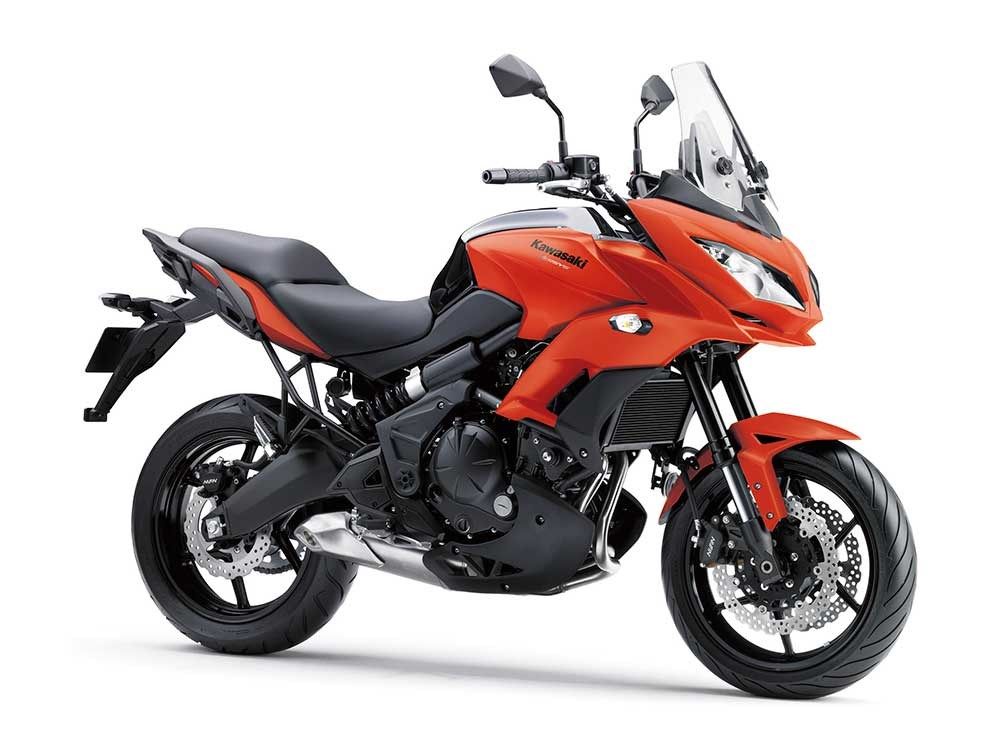Kawasaki->ke299 is throwing a rainbow-full of new colors to its 2016 lineup. A handful of Kawasaki models will benefit from the infusion of new colors, including the Versys 650->ke2738, the Vulcan->ke1749, and the ER-6.
Such a move may not seem like news worthy of headlines, but for Kawasaki’s customers, these new colors could mean the difference between buying a Kawasaki or opting for a competing brand. The biggest beneficiary of the new color schemes is the ER-6, known to US customers as the Ninja 650R. For its 2016 models, the whipper-snapping sports bike will now be available in Candy Lime Green with Metallic Spark Black fairing sides that fade into a lighter. Likewise, Candy Persimmon Red will also be a new color scheme for the 2016 model and will also come with the same Metallic Spark Black fairing sides. Then there’s the Metallic Carbon Gray option, which will retain a single color look.
In addition to the Ninja 650R, Kawasaki will also provide the Vulcan S a new Metallic Matt Carbon Gray color scheme to complement the existing and admittedly popular Urban City White finish.
Last but not least is the Versys 650, which will receive its own set of splashy colors, none more eye catching than the Candy Matte Orange scheme that will make its debut in the Versys range. A Pearl Stardust White finish will also be offered, this one coming with a Metallic Spark Black option.
These new colors will be available to all the 2016 models mentioned. More importantly, Kawasaki’s not going to discriminating between ABS and non-ABS models. Both variants will receive the new color schemes. Like I said, it’s not the splashiest update Kawasaki can make, but as far as piquing the interests of potential customers, we all know that nothing can do that quite like splashy and attractive colors.
Continue reading to read more about Kawasaki’s new color finishes for some of its 2016 models.
Why it matters
New colors don’t matter in the grand scheme of things. Overall, the bikes will be the same except for whatever mechanical upgrades Kawasaki puts in them. But if you really pay attention to the consumer, or at least a large part of them, you’ll understand that new color schemes play a bigger role in the whole process of buying a motorcycle.
The same principle applies in the car industry. Only a certain segment of the population understand the inner workings of a car or in this case, a bike. Most are more concerned with two things: how the bike looks and how much damage it’s going to have on the wallet.
The price of a bike is understandable because not everybody can roll out of bed and pick out a bike without regard for its cost. There’s no gray area in that regard. You can either afford it or you can’t.
But how a bike looks is completely subjective. Others may like a bike with bombastic stylings whereas others may prefer something a little simpler to the eyes. That’s where these new color schemes come into the equation.
They don’t make the bikes faster or more powerful, but they do create a stylistic differentiation amongst themselves that separates their worth and appeal other motorcycles, even those from the same brand. Having more color schemes gives a potential customer more colors to choose from.
In the end, when it comes to a customer’s rationale, the color of a particular motorcycle model is as important, maybe even more, as determining how fast or powerful said model is.

